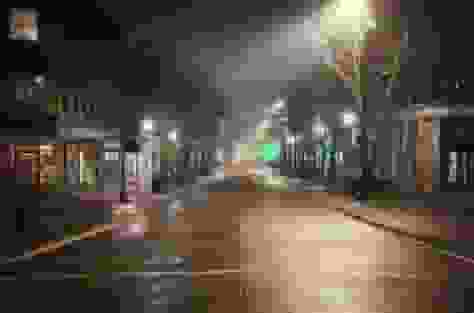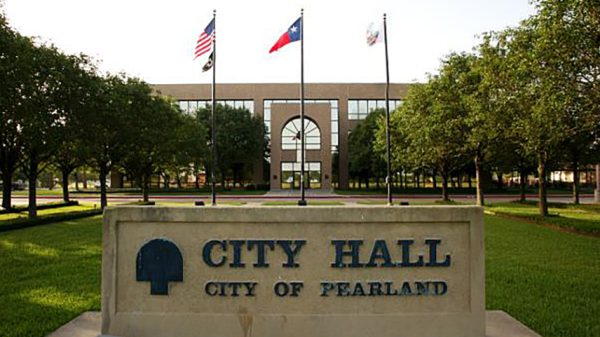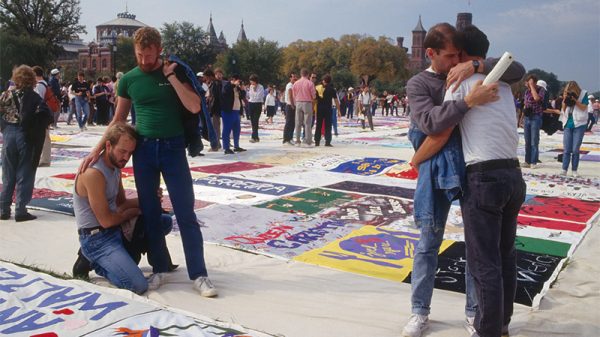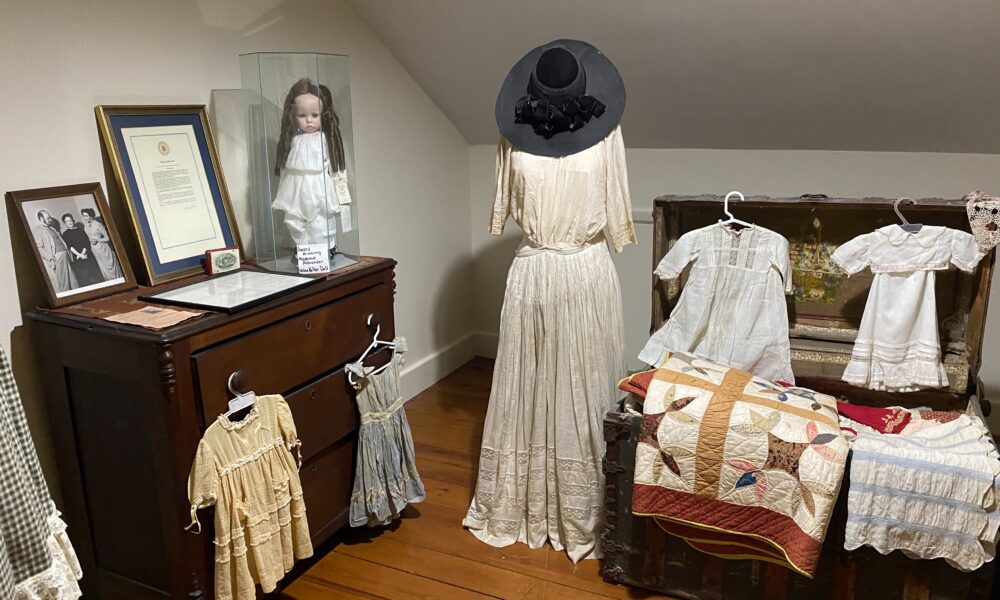
Helen Keller’s Childhood Home in Tuscumbia
Before Helen Keller became a worldwide inspiration, she was just a frustrated kid stuck in her own head at this old Alabama house. Ivy Green in Tuscumbia is where everything changed, thanks to one seriously persistent teacher and a water pump. Today, you can tour the home where it all began.

Helen Keller and Anne Sullivan
Helen was born a healthy baby on June 27, 1880, but got sick when she was just 19 months old. That illness took both her sight and hearing, leaving her cut off from the world for five years.
Her desperate parents reached out to Alexander Graham Bell, who connected them with Anne Sullivan on March 3, 1887. Sullivan taught Helen using a finger language created by Samuel Gridley Howe of the Perkins School for the Blind, plus her own methods.
The breakthrough came at the water pump when Sullivan spelled ‘water’ into Helen’s palm while running water over her other hand. After that moment, Helen learned lightning fast, mastering the alphabet and over 600 words in just six months.

The Cottage That Started It All
The small cottage next to the main house is where Helen was actually born. It started as a plantation office for keeping books before being converted into a bridal suite for Arthur Keller’s second wife, Kate Adams.
Helen described it in her autobiography as ‘a tiny house consisting of a large square room and a small one’ that was ‘completely covered with vines, climbing roses, and honeysuckles.’
Today, the cottage is 98% original and sits about 30 yards east of the main house. It has a large room with a lovely bay window and a playroom.
Though you can’t go inside, you can open the doors and peek in to see where Anne Sullivan worked intensively with Helen, teaching her to behave and communicate.

The Original Furnishings Tell Their Own Story
About 85% of the furniture at Ivy Green belonged to the Keller family. The dining table displays authentic pre-Civil War cutlery, and the downstairs bedroom features a handmade ‘crazy quilt’ crafted by Helen’s aunt.
In the guest room adjacent to the dining room, you’ll find glass display cases filled with Helen’s personal items.
The museum room contains Helen’s original Braille typewriter she used for her college work at Radcliffe and for writing her 11 books. You’ll also see her complete Braille book collection, photographs with various dignitaries, and hundreds of personal gifts she received while lecturing in 39 countries across five continents.

The Key That Locked Anne Sullivan Away
One of the coolest artifacts on display is the actual key Helen used to lock Anne Sullivan in her room during one of her early tantrums. Helen refused to tell anyone where she hid the key, so Anne had to escape by climbing out the upstairs window and being carried down a ladder.
This small key sits in a glass case in the guest room and represents the difficult beginning of their relationship. If you’ve seen ‘The Miracle Worker’ movie, you might remember this incident – it shows how challenging those early days were before Helen’s breakthrough at the water pump.

A Japanese Garden With International Connections
As you walk the grounds, you’ll come across a Japanese Garden featuring a concrete lantern gifted from Japan and a ceremonial gate donated by the Maori people of New Zealand. Helen visited both countries during her lifetime and influenced how they taught deaf and blind people.
The garden showcases plants Helen specifically wrote about in her books. Rather than trying to historically recreate the original garden, the designers focused on plants with interesting textures and fragrances – plants that appeal to touch and smell rather than sight, creating a sensory experience similar to what Helen would have appreciated.

The Historic Trees That Saw It All
Some of the massive trees on the property date all the way back to 1820. Huge magnolias that have been at Ivy Green since the house was built greet visitors as they arrive.
The property also features 150-year-old English boxwoods that Helen mentioned in her autobiography, writing that she ‘used to feel along the square stiff boxwood hedges’ to find her way around before her teacher came.
Today, a group of Master Gardeners maintains the grounds, planting vegetation Helen specifically mentioned in her writings. These include roses (her mother’s favorite), honeysuckle, daffodils, violets, lilies, clematis, jessamine, and rare butterfly lilies.

The Lions Club Connection
In 1925, Helen challenged the Lions Club at a convention in Cedar Point, Ohio, to become ‘Knights of the Blind in the crusade against darkness.’ The Lions Club took up this mission, which is still their main focus today.
Because of this historic connection, you’ll find the Lions Club International Memorial Fountain on the grounds and a special ‘Knights of the Blind’ walkway with commemorative bricks.
The Lions Club funded a white marble statue carved from Sylacauga, Alabama marble. Sculptor Edward Hlavka spent over two years creating it. This statue shows the moment when Helen first understood communication and has become one of the most photographed features at Ivy Green.

Experience ‘The Miracle Worker’ Live Performance
If you visit during summer, try to catch ‘The Miracle Worker’ performed live on the grounds. Shows run Friday and Saturday evenings from early June through mid-July. They’ve been performing this play at Ivy Green for over 60 years now, making it Alabama’s official state outdoor drama.
The production uses professional actors, authentic costumes, and period-appropriate sets. All performances are signed for the hearing impaired. In 1996, even the play’s author William Gibson visited.

Tour the Historic Home and Museum
The guided tour lasts about an hour, with guides pointing out which items belonged to the Kellers as you walk through each room. After the guided portion, you can explore on your own.
The upstairs contains three rooms: the boys’ room, Helen and Anne’s shared bedroom, and the trunk room containing Helen’s clothes and toys.
In the museum, you’ll see rare artifacts including Helen’s clothes and the desk she used. There’s a touching photo of Helen touching President Eisenhower’s face to ‘see’ him with her hands.

Nearby Attractions
While you’re in Tuscumbia, check out the Alabama Music Hall of Fame at 617 Highway 72 West. The famous Muscle Shoals Sound Studio and FAME Recording Studios are also just three miles from downtown. These legendary studios recorded tracks for Aretha Franklin, the Rolling Stones, and countless other music icons.
Spring Park offers a relaxing outdoor space with a picturesque waterfall, lake with jet fountain, carousel, and kiddie train. The park sits on what was Tuscumbia’s first settlement 200+ years ago and includes green spaces, bridges, and plaques about the area’s Native American heritage.
For water activities, head to the nearby Tennessee River’s Pickwick Lake and Wilson Lake where you can try paddling, wakeboarding, sailing, bass fishing, and fly fishing.

Visiting Ivy Green
Ivy Green is at 300 North Commons Street West in Tuscumbia, about two miles off Highways 72 and 43. It’s open Monday through Saturday, 8:30 AM to 4:00 PM, with the last tour starting at 3:45 PM.
The site closes on these holidays:
- Easter
- Labor Day
- Thanksgiving Day
- December 24-26
- New Year’s Day
Tickets cost $7 for adults and $4 for children, with discounts for seniors and AAA members.
You can get a $1 coupon from the Colbert County Tourism Center. For groups, call (256) 383-4066 at least 24 hours ahead. You can walk the grounds for free, but need a ticket to go inside the buildings.
The post The Alabama Home Where Helen Keller’s Journey Began at a Water Pump in 1887 Is Open for Tours appeared first on When In Your State.




![Tyson Foods Plant [Photo: Food Manufacturing]](https://southarkansassun.com/wp-content/uploads/2023/08/iStock_1185520857__1_.5e441daa51cca-600x337.jpg)







![Silverado Senior Living Management Inc. [Photo: Los Angeles Times]](https://southarkansassun.com/wp-content/uploads/2023/10/download-6-4-600x337.jpg)

![China's Wuhan Institute of Virology [Photo: Nature]](https://southarkansassun.com/wp-content/uploads/2023/09/d41586-021-01529-3_19239608-600x337.jpg)
















